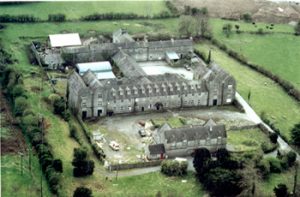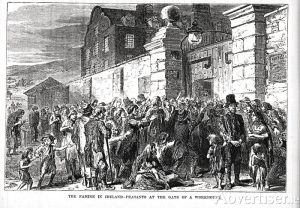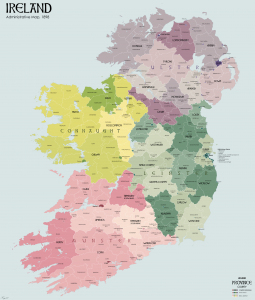From Britain’s point of view, the 1800 Act of Union was primarily a defensive measure to secure its western flank against the French. But after the defeat of Napoleon in 1815, the London government found itself in charge of a country of which it was profoundly ignorant. So, with true industrial-age logic, it set about creating official machinery to quantify Ireland and make it governable. Almost all surviving early 19th-century research sources emerged from this process: the Ordnance Survey, the Valuation Office, the censuses of 1821 and 1831 and much more.

One part of that administrative machinery, the Poor Law, is still with us. In 1838, 135 Poor Law Unions were created, covering the entire island. Each Union had an urban workhouse at its centre, responsible for providing the most basic and grudging short-term relief to the utterly destitute. The Unions were designed to be self-financing. The obligation to be pay for themselves overrode all others, and that is why they ignore county and parish boundaries – the area each one covered had to produce a similar amount of tax.
 Property-owners in each Union paid the tax and in return could elect representatives to the Union’s Board of Guardians to oversee spending. So from the start, the Unions were geographically a hybrid of health service catchment area and electoral constituency. And, weirdly, that geographic hybrid exists even now.
Property-owners in each Union paid the tax and in return could elect representatives to the Union’s Board of Guardians to oversee spending. So from the start, the Unions were geographically a hybrid of health service catchment area and electoral constituency. And, weirdly, that geographic hybrid exists even now.
For elections, the Unions were subdivided into District Electoral Divisions (DEDs), the areas used for the 1901 and 1911 censuses: those DEDs are still unchanged and in use in contemporary elections in rural areas.
Then, when universal registration of births, deaths and marriages began in 1864, the public health service took on the job. So subgroups of the DEDs were gathered into local registrar’s districts or “dispensary districts”, with anywhere from five to ten DEDs in each one. The Union was euphemised as a “Superintendent Registrar’s District”.

The Department of Health is still in charge of civil registration today. And after almost 200 years, its Superintendent Registrar’s Districts still largely cover the areas laid down by the old Poor Law Unions. They haven’t gone away, you know.
Peter Higginbotham’s wonderful workhouses.org.uk will tell you more.
I have recently found both my great grandfather Died 1923 and great grandmother Died 1932.in the south Dublin union poor house. They didn’t live in the poor house however, their deaths are registered there. I can’t find where they were buried. Did the poor houses have a special place where they buried their dead if nobody claimed them?
Try the Parish of St James (either Cof I or RC)…
Thank you I will try contacting the church as my ggd died in 1923 and my ggm died in 1932. I will post anything I find.
The Poor Law in Ireland was the foundation of our public health and social welfare systems, civil registration, and in rural areas, sanitation and social housing.
Although cities and towns enjoyed elected corporations earlier, rural areas only got their first taste of local democracy with the advent of the Poor Law.
http://www.historyplace.com/worldhistory/famine/ruin.htm
The Brits are responsible for Ireland’s in ability to take care of themselves when they were completely ‘raped’ prior to the 1800’s. The 2 Potato Famines decimated the poor.
Thank you for this marvelous description and explanation. I’ve tried to read and understand before, but you managed to pull all the boring away from it and leave the story!
Thanks for the workhouse link John. As you say, the Poor Law is still with us and many older patients did not like the idea of being admitted to Infirmaries when they were ill, as they thought they were being admitted to the work house! Thankfully, nowadays this connotation has probably mostly disappeared, but it was not so when I first started my nursing career over 50 years ago.